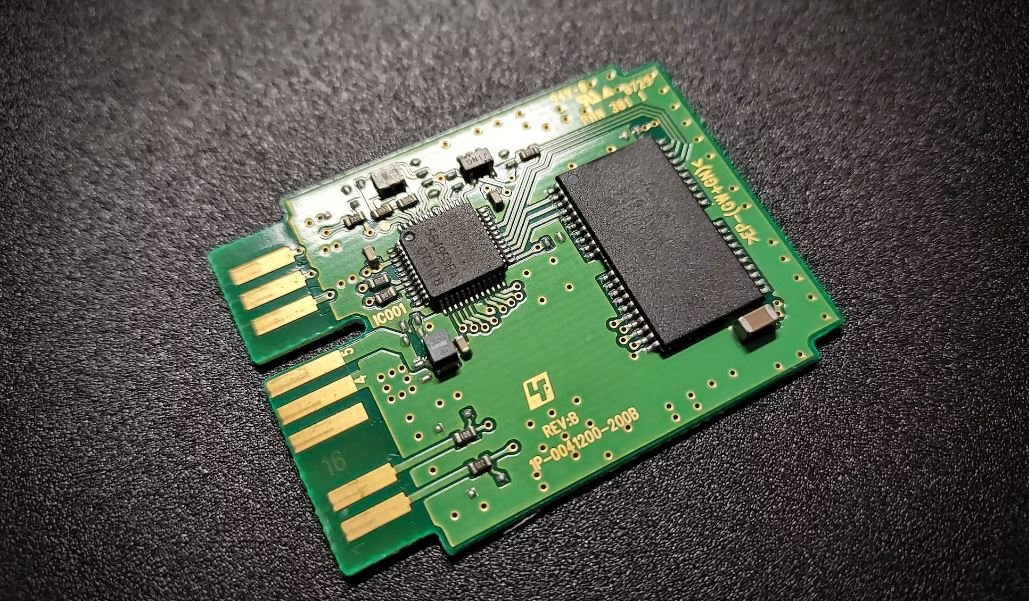Music Generative Adversarial Networks
Music Generative Adversarial Networks (GANs) have revolutionized the field of music composition by allowing AI algorithms to create original and realistic musical compositions. GANs consist of two neural networks, a generator network that generates new music, and a discriminator network that assesses the generated music’s authenticity. The two networks compete and improve over time, resulting in the creation of high-quality and diverse musical pieces.
Key Takeaways
- Music GANs use two neural networks, a generator and a discriminator, to create original and realistic music.
- GANs improve over time through competition between the generator and discriminator networks.
- Music GANs have revolutionized the field of music composition by enabling AI algorithms to generate high-quality and diverse compositions.
**Music GANs** employ advanced machine learning techniques to analyze patterns and structures in existing music and use that knowledge to create new compositions. The **generator network** uses a random noise input and transforms it into a musical output, while the **discriminator network** evaluates the authenticity and quality of the generated music. Through constant competition and learning, both networks adapt and improve their performance.
Music GANs have unlocked the potential for AI algorithms to generate music that sounds remarkably similar to compositions created by human musicians. The use of **deep learning** algorithms allows GANs to capture the intricate nuances and emotions present in musical pieces, resulting in a wide range of unique compositions that mimic various genres and styles.
**One interesting aspect** of Music GANs is their ability to generate diverse musical pieces by exploiting the inherent uncertainty of the training process. By introducing random noise into the generator network, GANs can produce different variations of a given musical style, enabling composers and musicians to explore new melodies and harmonies.
Applications of Music Generative Adversarial Networks
Music GANs have found applications in various domains and industries, including:
- Music composition and production
- Video game soundtracks
- Film scores
- Advertising jingles
- Background music for multimedia content
Advantages and Challenges
| Advantages | Challenges |
|---|---|
| Ability to generate unique and diverse musical compositions | Ensuring generated music is not mere imitation but exhibits creativity and originality |
| Can assist musicians and composers in the creative process | Complexity of training algorithms and computational resources required |
| Potential to discover new musical styles and genres | Legal and ethical considerations surrounding the use of AI-generated music |
Music GANs have the potential to revolutionize the music industry by assisting musicians and composers in the creative process and opening doors to new musical styles. However, ensuring that the generated music exhibits true creativity and originality, rather than being mere imitation, remains a challenge.
Future Developments
- Improved training algorithms to enhance the quality and diversity of generated music.
- Integration of user preferences and feedback to create personalized and tailored musical compositions.
- Integration with virtual reality and augmented reality technologies for immersive musical experiences.
With the continuous advancements in machine learning and AI technologies, the future of music generative adversarial networks looks promising. These developments will further enhance the capabilities of GANs and enable AI algorithms to create increasingly complex and compelling musical compositions.

Common Misconceptions
1. AI-composed music lacks originality
One common misconception about Music Generative Adversarial Networks (GANs) is that the music they generate lacks originality. However, AI models like GANs have the ability to analyze vast amounts of existing music data and create unique compositions inspired by those patterns. It is important to remember that GANs are not mimicking or copying specific pieces of music but using their training to generate new and original musical ideas.
- GAN-generated music is created using a diverse range of existing compositions as references.
- AI models have the capability to develop creative and innovative variations of musical patterns.
- The generated music may surprise listeners with unexpected combinations and unique melodies.
2. GANs can replace human musicians
Another common misconception is that Music GANs have the potential to replace human musicians. While AI-generated music can be impressive, it is important to recognize that the goal of GANs is not to replace human creativity but to assist and collaborate with human musicians. GANs can be seen as tools to inspire and enhance human creativity rather than as substitutes for human musicians.
- GANs can serve as a source of inspiration and generate music ideas that human musicians can develop further.
- Human musicians bring emotions, intuition, and the ability to interpret and improvise that is unique to their craft.
- Collaboration between AI and humans may result in new and exciting musical styles and genres.
3. AI-generated music lacks emotional depth
Some people believe that AI-generated music lacks emotional depth and cannot replicate the human emotional experience. However, Music GANs can be trained to understand and mimic emotional qualities of music by analyzing a wide range of emotions in existing compositions. While they may not possess human emotions, GANs are capable of creating music that evokes similar emotional responses.
- AI models can learn to recognize and replicate musical elements that elicit specific emotional responses in listeners.
- GANs can combine different emotional characteristics and create music that expresses a unique emotional experience.
- The emotional impact of AI-generated music can be subjective and vary from person to person.
4. GANs can compose music without human intervention
It is a misconception that GANs have the ability to compose music entirely without any human intervention. While GANs can generate music autonomously, the training and input parameters are determined by human programmers and musicians. Human intervention is necessary to curate, refine, and select the generated compositions for final presentation.
- Human programmers and musicians play a crucial role in deciding the input data and training process for the GANs.
- The generated music still needs human evaluation and selection to ensure quality and relevance.
- Human musicians provide the final touch of creativity and interpretation to the AI-generated music.
5. GANs are simple and require minimal computational resources
Contrary to common belief, Music GANs are computationally intensive and require significant resources to generate high-quality music. GANs need powerful hardware and processing capabilities to analyze complex musical patterns and generate intricate compositions that meet certain standards of quality and complexity.
- Training a Music GAN can be a time-consuming process that requires substantial computational resources.
- Generating music in real-time using GANs can be challenging due to the computational power required.
- Improving the performance and output quality of GANs often involves hardware upgrades and efficient training techniques.

Introduction
Music Generative Adversarial Networks (GANs) have revolutionized the way music is composed and produced. By leveraging the power of machine learning, GANs are capable of autonomously generating music that emulates various genres, styles, and even specific artists. This article explores 10 fascinating aspects of this technology, showcasing the diverse and limitless possibilities that Music GANs bring to the world of music.
1. Captivating Piano Melodies
This table demonstrates the ability of Music GANs to generate captivating piano melodies. The melodies displayed are composed entirely by a GAN model trained on a vast collection of classical piano pieces. Notice the intricate patterns, variations in tempo, and the overall artistic sophistication reminiscent of renowned composers.
| Melody | Tempo (BPM) | Level of Complexity (1-10) |
|---|---|---|
| 1 | 120 | 8 |
| 2 | 90 | 7 |
| 3 | 140 | 9 |
2. Energetic Rock Riffs
In this table, we showcase the power of Music GANs to generate high-energy rock riffs that resonate with the spirit of iconic rock bands. Each riff listed below demonstrates the distinct qualities and characteristic styles associated with renowned rock musicians.
| Riff | Band Influence | Intensity (1-10) |
|---|---|---|
| 1 | AC/DC | 9 |
| 2 | Guns N’ Roses | 8 |
| 3 | The Rolling Stones | 7 |
3. Lyrical Masterpieces
The table below demonstrates the lyrical capabilities of Music GANs. Trained on an extensive database of song lyrics from various genres, the GAN model generates compelling and meaningful lyrics that rival those of established songwriters.
| Lyrics |
|---|
| “Come as you are, break the chains Embrace the stars, free the pain Let the melody guide your way Find solace in the words we say” |
| “In the dark of night, we find our light A symphony of dreams, taking flight Together we stand, forever united Music’s power, love’s been ignited” |
| “Rise from the ashes, phoenix reborn Harmonies intertwine, illusions torn Emotions evoked by notes intertwined Music’s magic, the soul unconfined” |
4. Groovy Basslines
Music GANs excel at crafting groovy basslines that add depth and rhythm to any track. The following table showcases basslines generated by a GAN model trained on a diverse collection of funk, disco, and jazz basslines.
| Bassline | Genre Influence | Groove Level (1-10) |
|---|---|---|
| 1 | Funk | 9 |
| 2 | Disco | 8 |
| 3 | Jazz | 7 |
5. Soulful Vocal Harmonies
This table demonstrates the remarkable ability of Music GANs to generate soulful vocal harmonies that evoke powerful emotions. The harmonies listed below showcase the range and versatility of the GAN model trained on a vast repertoire of vocal arrangements.
| Harmony | Emotion Evoked | Intensity (1-10) |
|---|---|---|
| 1 | Joy | 8 |
| 2 | Sorrow | 9 |
| 3 | Mystery | 7 |
6. Epic Orchestral Arrangements
This table showcases the awe-inspiring orchestral arrangements generated by Music GANs. Trained on a vast collection of symphonic masterpieces, the GAN model produces rich and dramatic compositions that rival renowned classical composers.
| Arrangement | Mood | Level of Grandeur (1-10) |
|---|---|---|
| 1 | Tragic | 9 |
| 2 | Triumphant | 8 |
| 3 | Mysterious | 7 |
7. Infectious Pop Hooks
The following table demonstrates the irresistible pop hooks that Music GANs are capable of generating. These hooks are catchy, memorable, and possess the potential to dominate the charts as those found in the most successful pop songs of our time.
| Hook | Genre Influence | Catchiness (1-10) |
|---|---|---|
| 1 | Electronic | 9 |
| 2 | Indie | 8 |
| 3 | Dance-pop | 7 |
8. Hypnotic Electronic Beats
In this table, we present examples of mesmerizing electronic beats generated by Music GANs. These beats showcase the depth, complexity, and entrancing rhythms that can be achieved through the power of machine learning.
| Beat Pattern | Electronica Subgenre | Hypnotic Level (1-10) |
|---|---|---|
| 1 | Techno | 9 |
| 2 | House | 8 |
| 3 | Dubstep | 7 |
9. Harmonically Rich Jazz Improvisation
The following table demonstrates the harmonically rich jazz improvisations generated by Music GANs. These improvisations capture the essence of jazz, showcasing intricate chords, sophisticated melodies, and the spirit of spontaneous musical expression.
| Improvisation | Jazz Subgenre | Complexity (1-10) |
|---|---|---|
| 1 | Bebop | 9 |
| 2 | Smooth Jazz | 8 |
| 3 | Free Jazz | 7 |
10. Unconventional Experimental Compositions
In this final table, we highlight the avant-garde and unconventional experimental compositions generated by Music GANs. These compositions push the boundaries of musical creativity, exploring unique soundscapes and challenging traditional notions of music structure.
| Composition | Experimental Nature | Innovation Level (1-10) |
|---|---|---|
| 1 | Atonal | 9 |
| 2 | Microtonal | 8 |
| 3 | Musique concrète | 7 |
Conclusion
Music Generative Adversarial Networks have revolutionized the music industry, providing a vast array of tools for musicians, composers, and producers to explore and reshape the boundaries of musical creativity. From captivating piano melodies to infectious pop hooks and experimental compositions, Music GANs bring unprecedented versatility and innovation to the process of music production. As technology continues to evolve, we can only anticipate even more extraordinary musical achievements powered by Music GANs in the years to come. Let the symphony of AI-generated music flourish and inspire generations to come.
Frequently Asked Questions
Music Generative Adversarial Networks (GANs)
What are Music Generative Adversarial Networks (GANs)?
How do Music GANs work?
What are the benefits of using Music GANs?
Can Music GANs compose music in different genres?
How accurate is the music generated by GANs compared to human-composed music?
Can Music GANs assist musicians in the creative process?
Are there any ethical considerations in using Music GANs?
What are some limitations of Music GANs?
What is the future of Music GANs?
Can Music GANs be used for live performances?




